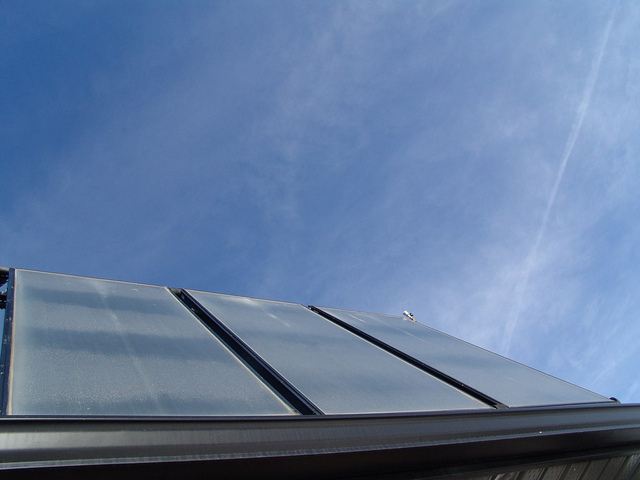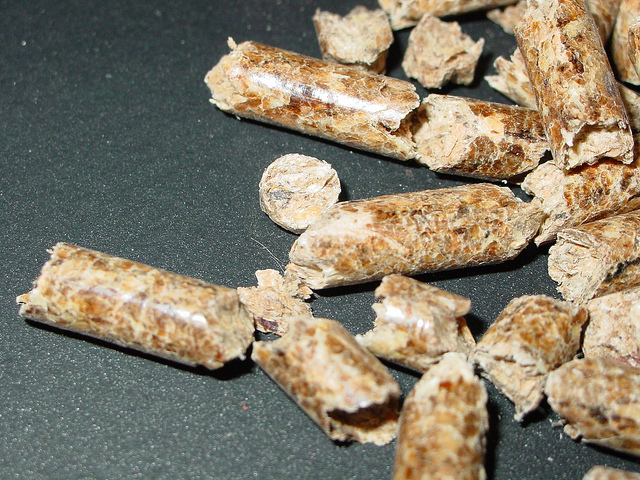The UK government has made a legal commitment to ensure 15% of the UK’s energy comes from renewable sources by 2020. In order to help with this target, the government has introduced a number of incentives, designed to make renewable energy more financially attractive.
One such introduction is the Renewable Heat Incentive (RHI), which aims to encourage businesses, communities, public bodies and domestic householders to install renewable heat generating technology. The scheme is the first long term financial support programme for renewable heat in the world, and makes renewable heat technologies much more economically viable than ever before.
This Renewable Heat Incentive Guide aims to give householders an understanding of what the RHI is, how they can benefit from it and the current status of the scheme.
 JMacPherson / CC BY 2.0
JMacPherson / CC BY 2.0
What is the RHI?
The RHI is an incentive scheme for householders and businesses installing renewable heat technologies. Although the finer details of the domestic scheme are yet to be announced, it will work in a similar way to the Feed In Tariff (FiT), where householders are paid based on how much heat they produce.
The scheme is currently in operation for non-domestic renewable heat installations, with owners paid varying amounts based on the technology they have installed and the amount of heat generated. Payments under the non-domestic scheme are fixed and guaranteed for 20 years, making renewable heat a highly profitable investment for many adopters.
The domestic RHI
For domestic householders, the RHI will become available in the spring of 2014. A series of delays, consultations and changes to the scheme has meant it has been put back a number of times. The latest consultation ended in December 2012 and the government announced its proposals in July 2013 with a view to launching the scheme in spring 2014. You can find details of the proposed scheme in our Domestic RHI Questions and Answers section.
In the meantime, householders who wish to install renewable heat are eligible for some financial support via the Renewable Heat Premium Payment (RHPP) scheme. This funding involves a one off payment to help offset the cost of renewable heat technology, and can be applied for by individual householders, community groups and social landlords.
People who choose to install their technologies with help from the RHPP will still be eligible to claim the RHI. However, the amount of funding they get through the RHI will be reduced, to take into account the money they have already received under the RHI.
 Alternative Heat / CC BY 2.0
Alternative Heat / CC BY 2.0
What technologies are covered under the RHI?
Technologies that are confirmed to be eligible for support are:
- Pellet stoves with back boilers providing central heating for the whole property
- Biomass boilers providing central heating for the whole property
- Ground source heat pumps
- Air to water heat pumps
- Solar thermal
At this stage, there is no confirmation that air to air heat pumps, log stoves or any other technologies not on this list will be supported. However, the consultation included a review of this policy, so we await the final announcements later this year to find out exactly what will and will not receive support.
How much will I get?
The government has announced tariff rates for the domestic RHI:
- Biomass boilers: 12.2p/kWh
- Ground source heat pumps: 18.8p/kWh
- Air to water heat pumps: 7.3p/kWh
- Solar thermal: at least 19.2 p/kWh
Payments are to be made quarterly over 7 years. You can find more detail and up to date tariff tables at these links:
Domestic RHI Tariff Rates
Commercial RHI Tariff Rates
 Images Money / CC BY 2.0
Images Money / CC BY 2.0
What now?
For more details on rates, eligibility criteria etc. under the RHI scheme please see the rest of our Guide to the Renewable Heat Incentive.
For details of the Domestic RHI proposed rates, criteria etc. please see Domestic Renewable Heat Incentive.
If you would like to explore renewable heat for your property, follow this link to find and contact renewable energy installers including biomass, heat pumps and solar thermal.


